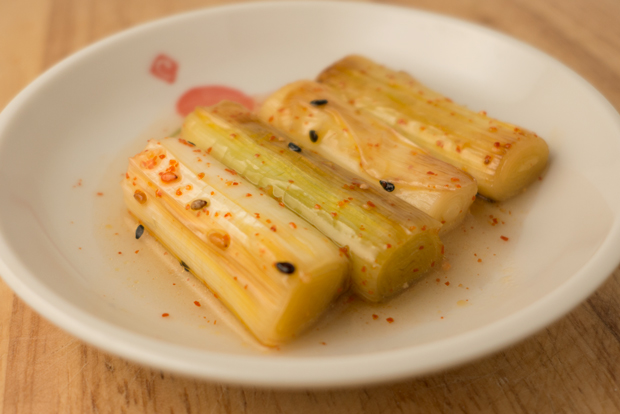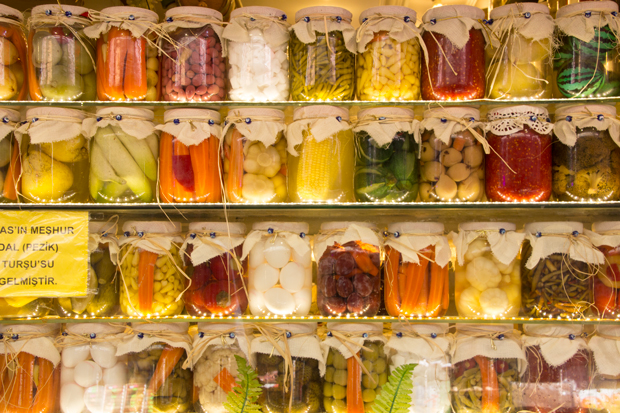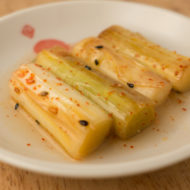Japanese-style grilled leek pickle with shichimi tougarashi (焼きねぎの七味吸酢漬け)

I thought the restaurant world had gone a bit mad when a few years ago some establishments started offering a “bread course”. Not to put down bakers or doubt the excellence of the bread but it seemed like yet another way to part fools, er, “foodies”, from their money. It obviously worked because there’s an even sillier trend doing the round: the “pickle plate”. That’s right. What used to be a condiment and long taken for granted in many cuisines has now been promoted to instagram-worthy status. Again, I’m sure they are very good and creative pickles. But having grown up in achaar-obsessed India where pickles are an indispensable part of any meal this seems a step too far. What next? A “water course”? (Now that someone is selling seawater to home cooks that’s not as far-fetched as you might think!)
Pickles are of course central to many cuisines, from Korean to Turkish. Indeed, in Turkey, as you can see in the picture below taken on a trip to Istanbul last year, turşu (Turkish for pickles) involve everything from cauliflower to zucchini! Japan is another country where pickles-called tsukemono (漬け物)-have been elevated to an art form. Sadly, traditional tsukemono such as nukazuke (糠漬け), which uses rice bran to ferment vegetables, are largely unknown to outsiders. But if you browse the cookbook section of any bookstore in Japan you will quickly realize that a large part of Japanese cuisine seems to be devoted to pickling (and more generally fermenting and preserving). Today’s recipe comes from a book-hajimete no tsukemono to umeboshi (はじめての漬け物と梅干し)-I discovered on one such browsing expedition. It is a beginner’s guide to Japanese pickle-making and, while unfortunately only available in Japanese, like all Japanese cookbooks it is extremely well illustrated and worth a look even if you don’t read any Japanese. Like most Japanese pickles this recipe uses rice vinegar, which is less acidic and a bit sweeter than distilled “Western” vinegars. More unusually, it calls for Japanese 7-spice powder (七味唐辛子) which includes, amongst other things, sesame seeds and Sichuan peppercorns.


Japanese-style grilled leek pickle with shichimi tougarashi (焼きねぎの七味吸酢漬け)
Yield: 2 servings
Prep Time: 5 min
Cook Time: 5 min
Total Time: 40 min
Ingredients:
- ¼ cup rice vinegar
- 1 Tbsp sugar
- 1 tsp mirin
- 1 Tbsp water
- ½ tsp shichimi tougarashi (七味唐辛子)
- ¼ tsp coarse sea salt
- 2 tsp oil
- 3 baby leeks cut into 4 cm-lengths
Directions:
- Mix all the ingredients on the list up to and including the salt in a bowl. Taste and adjust flavors. Set aside.
- Heat the oil in a large skillet over a medium-high flame and fry the leeks until golden brown on all sides, about 4-5 minutes.
- While still hot transfer to the bowl and toss to mix well. Cool slightly before covering the bowl with plastic wrap.
- Place in the fridge for 30 minutes before eating.
Adapted from Hajimete no tsukemono to umeboshi (はじめての漬け物と梅干し) by Kiyomi Ishizawa (清美 石澤) (link)
